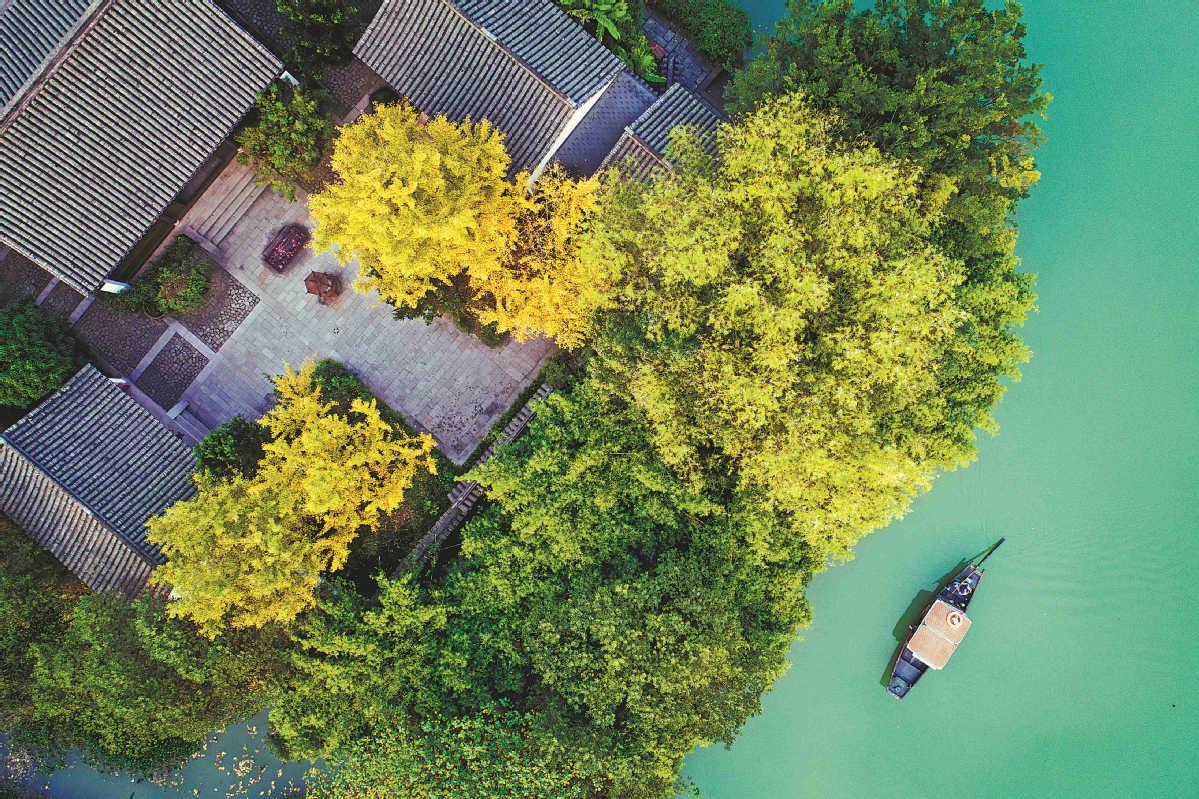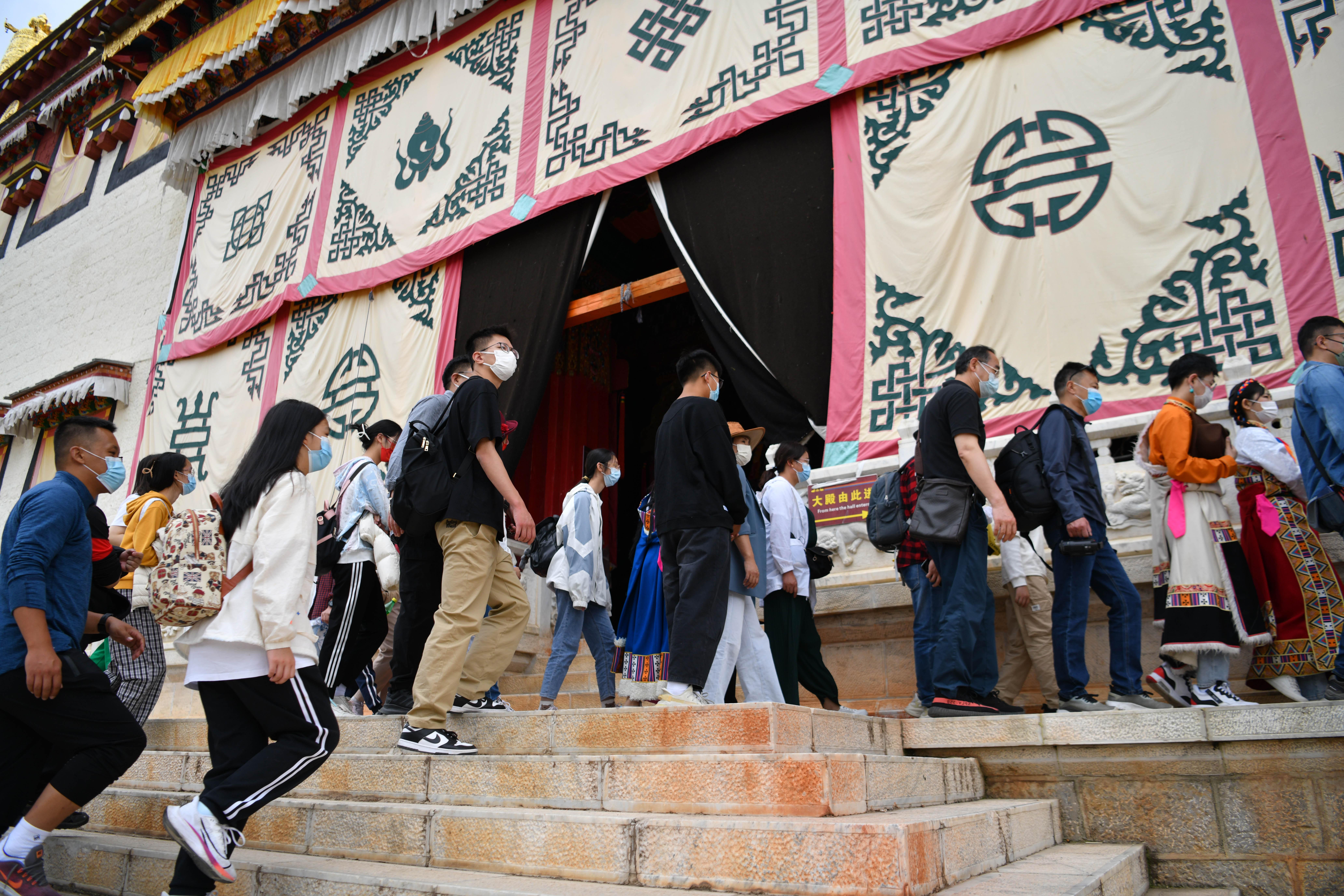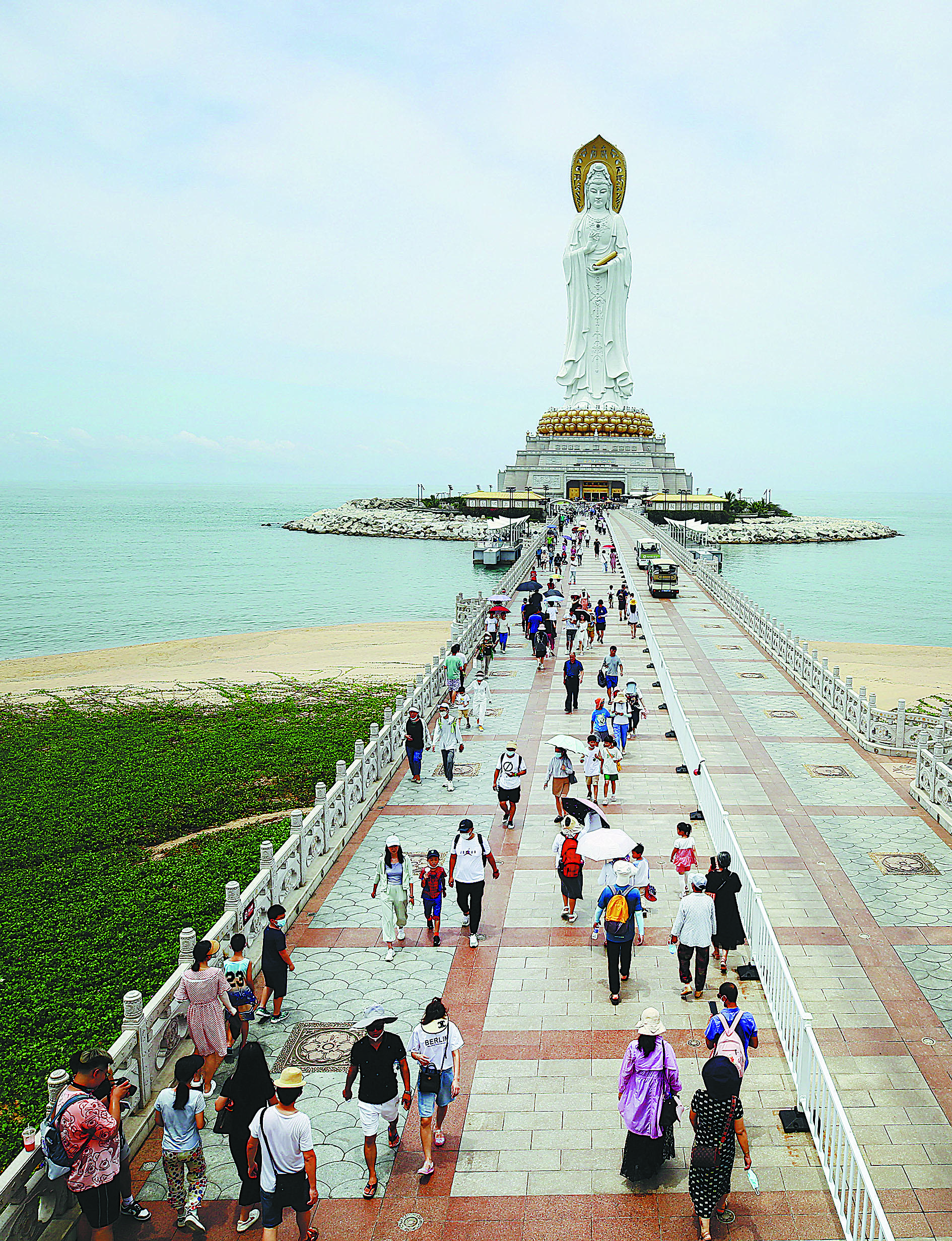Nation opens door wider to tour groups

Hangzhou Xixi National Wetland Park, Zhejiang province, attracts city visitors who pick vegetables, try their hand at fishing and experience farm life. PAN JINCAO/FOR CHINA DAILY
Improved COVID-19 restrictions trigger increased demand
Jiang Nan, her husband and their 4-year-old twin sons enjoyed their recent 12-day road trip in Yunnan province.
An office worker from Beijing, Jiang, 35, said: "My sons are very excitable and like to play with water. It's tiring traveling with young children for nearly two weeks, but we had a great time."
To escape the fast pace of life in the Chinese capital, the family headed to scenic destinations with good-quality accommodations.
Like the Jiangs, more people are traveling in China this summer, as the dynamic zero-COVID policy has largely contained the latest outbreaks of the disease.
Some travelers avoid the heat, while others are attracted by the beautiful scenery in the east of the country. Some like to venture south to enjoy island life, and others travel to the northwest by car.
The central government has also relaxed COVID-19 prevention and control policies.
On May 31, the "circuit breaker" mechanism for cross-provincial tourism was changed from applying to provinces with medium- and high-risk areas to counties and districts with such risks.
On June 29, the authorities announced that the asterisk indicating regions with COVID-19 infections would be removed from the online code tracking an individual's travel history.
Such measures have allowed the resumption of cross-provincial tours in many regions, increasing the desire to travel. Visitors are also being offered tourism promotion coupons at destinations.
With the introduction of these steps, the summer vacation is the perfect time for visitors to venture much farther from home.
Fang Zeqian, industry analyst at Trip.com Group, said: "I'm confident about the summer tourism market. Our principle is always 'service first, customer first'."
With increased tourist flows, scenic areas nationwide are offering a wealth of daytime and nighttime tourism products and enhanced services to meet visitors' needs.

Diqing Tibetan autonomous prefecture, Yunnan. LIU RANYANG/CHINA NEWS SERVICE
Diverse destinations
At Hangzhou Xixi National Wetland Park in Zhejiang province, tourists view the scenery from electric or traditional wooden boats while sipping cups of tea.
City visitors to the park experience agritainment-picking vegetables, going fishing and sampling hearty meals prepared with local farm produce.
Parents and children row dragon boats, paddle kayaks, and join study tour activities to learn about the park's aquatic plants and also an ancient paper-making method. At night, they watch an immersive show featuring culture from the Song Dynasty (960-1279).
Some 38 percent of visitors to the park are local residents, many of them elderly or parents with children.
This summer, Yunnan is one of the nation's most popular destinations for long tours, which include the provincial capital Kunming, Dali, Lijiang and Shangri-la.
Situated north of Myanmar and Laos, Xishuangbanna Dai autonomous prefecture in Yunnan started to develop its tourism industry in the 1980s, soon after China introduced the reform and opening-up policy.
After more than four decades, the prefecture remains a popular destination due to its magnificent tropical scenery, exotic ethnic group cultures, and wild elephants. It also features in travel guide book publisher Lonely Planet's top 10 regions to visit this year.
In the first week of last month, about 91,000 tourist visits were reported at Xishuangbanna Gasa International Airport, a month-on-month rise of 260 percent, with the airport ranking first among its competitors in Yunnan.
Dwarfed by towering tropical rain forests, tourists to the area experience the beauty of nature. They also take part in outdoor activities such as trekking and camping, and visit tea plantations and ancient villages, where they meet the locals.
At Xishuangbanna Tropical Botanical Garden, visitors witness some 13,000 species of living plants, including a number of precious varieties. The venue is also a research institute affiliated with the Chinese Academy of Sciences.
Xishuangbanna Dai Ethnic Group Garden, which comprises five well-preserved Dai villages, attracts visitors with its local culture, history, religion and folk customs.
Arrivals stay in traditional Dai style diaojiaolou-suspended wooden houses-in an area surrounded by coconut and betel palms and bambusa multiplex-a species of bamboo that can grow to a height of 7 meters.
The Water Splashing Festival, which falls in mid-April, is a special occasion for the Dai people to traditionally welcome the start of their new year.
At the garden, visitors dressed in hired traditional Dai costumes can take part in water-splashing activities twice a day for most of the year, but three times a day in the peak summer tourist season.
They also experience living like the Dai people-tasting their cuisine, making pottery, singing and dancing. Children also explore the rice fields and go fishing.
Ou Chenglin, a manager at the garden, said it has a maximum capacity of 20,000, adding that the number of visitors to the venue each day last month has ranged from 6,000 to 8,000.
With preventive measures taken against COVID-19, the venue has also recruited more security personnel and volunteers. The latter serve tourists at the main entrance, in public squares and at theaters.
In January, daily livestream broadcasts were launched at the garden to promote its appeal to visitors from across the country.
Ou said, "While our task used to be to help local villagers become rich through tourism, the aim now is to increase their income via development, including improving services, operations, roads and other infrastructure."

Visitors explore Yalong Bay, Sanya, Hainan. XU LIN/CHINA DAILY
Favorite attractions
According to Trip.com Group, water-themed playgrounds and theme parks are favorite destinations for those traveling with children in summer.
In Hainan province, Sanya Haichang Fantasy Town, which stands alongside picturesque Haitang Bay, attracts locals and tourists with its free admission and beautiful coastal scenery at night.
Visitors watch free parades in the evening, with performers from China and overseas dressed as creatures such as polar bears and sea horses.
Wang Yuanyuan, the scenic area's brand manager, said the ages of its visitors range from 20 to 45, and most of them are parents with children. Numerous young people also visit the venue with their boyfriends or girlfriends.
They experience attractions such as the 88-meter-high Eye of Sanya Ferris wheel, which offers stunning aerial views of the coastline. An entry fee is levied for such amusements.
"The summer tourism boom has attracted more visitors from outside Hainan, with the fantasy town filling a vacuum in the city's nighttime economy," Wang said.
"We're confident in the market for theme parks and amusement parks in Hainan, which is a popular destination for parents traveling with children."

Honghe Hani and Yi autonomous prefecture, Yunnan province. HU CHAO/XINHUA
Reasons for boom
Wu Liyun, an associate professor at Beijing International Studies University's China Academy of Culture and Tourism, attributes the summer tourism boom to several factors.
She said that due to a resurgence of COVID-19 outbreaks in the first half of this year, people from certain cities rarely had the chance to join tours that crossed provincial borders.
As a result, it was only natural for them to set off on trips when many regions resumed cross-provincial tours recently thanks to policies being relaxed to spur a recovery in the industry.
Wu added that the summer vacation is always the peak tourist season in China.
Parents take their children on tours, middle school and university students have graduation trips, while some people opt to take annual leave during the summer, Wu added.
"Another factor is the preferential policies introduced across the country aimed at stimulating the tourism market," she said.
Authorities at provincial, city and county level are issuing tourism promotional coupons for visitors to use in hotels, at scenic areas and for admission to shows. Some scenic areas are even waiving entrance fees to attract arrivals.
However, a large influx of visitors may cause inconvenience, with long lines forming in scenic areas and hotels being fully booked.
"People like to follow the crowd in visiting a popular destination. Some venues become crowded because they do not prepare well to handle such numbers," Wu said.
She suggested that destinations optimize the supply of tourism products to encourage visitors to stay longer. They should also improve public services and infrastructure such as parking lots and public toilets to meet visitors' demands.

Sanya, Hainan province. CHEN WENWU/FOR CHINA DAILY
By XU LIN
